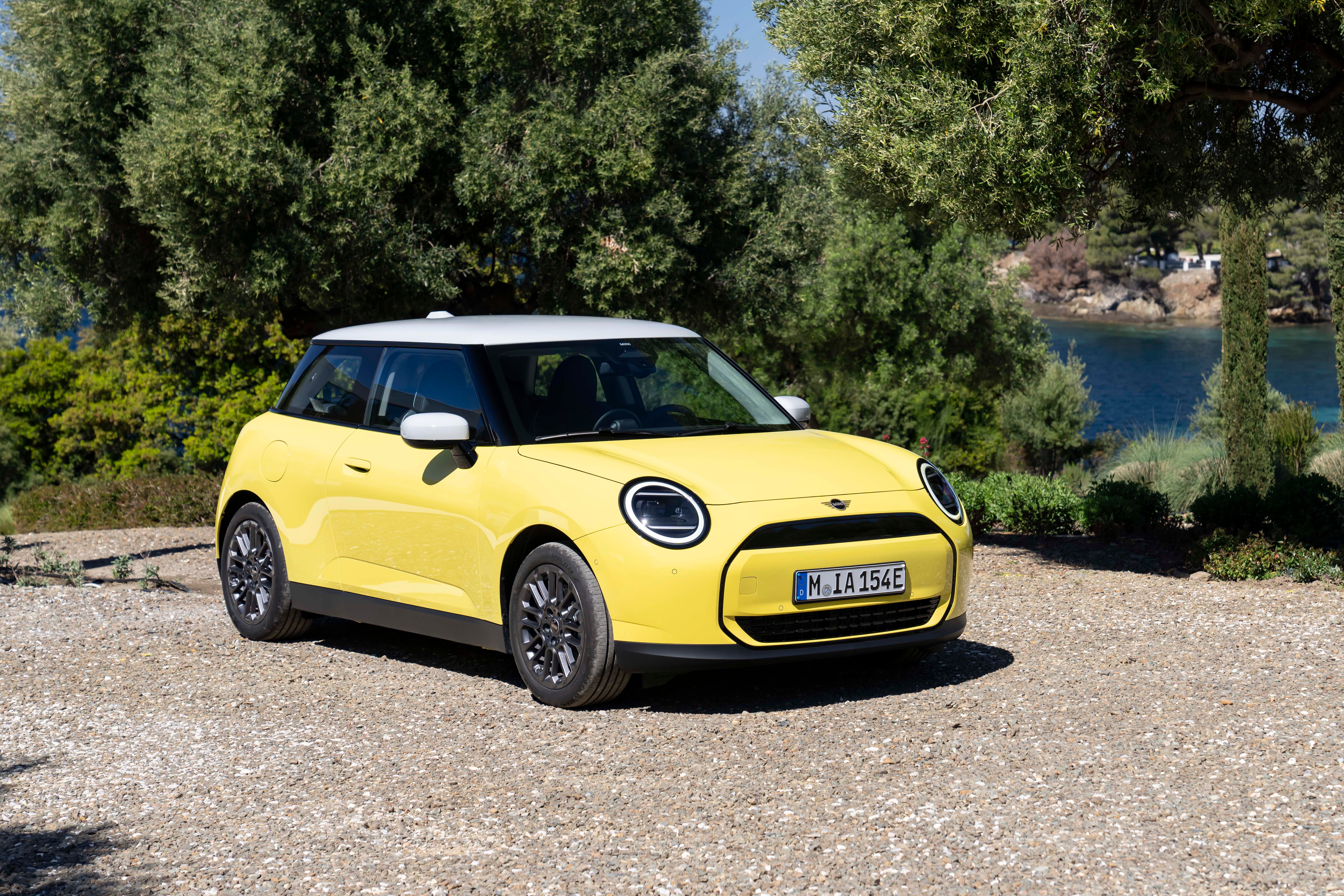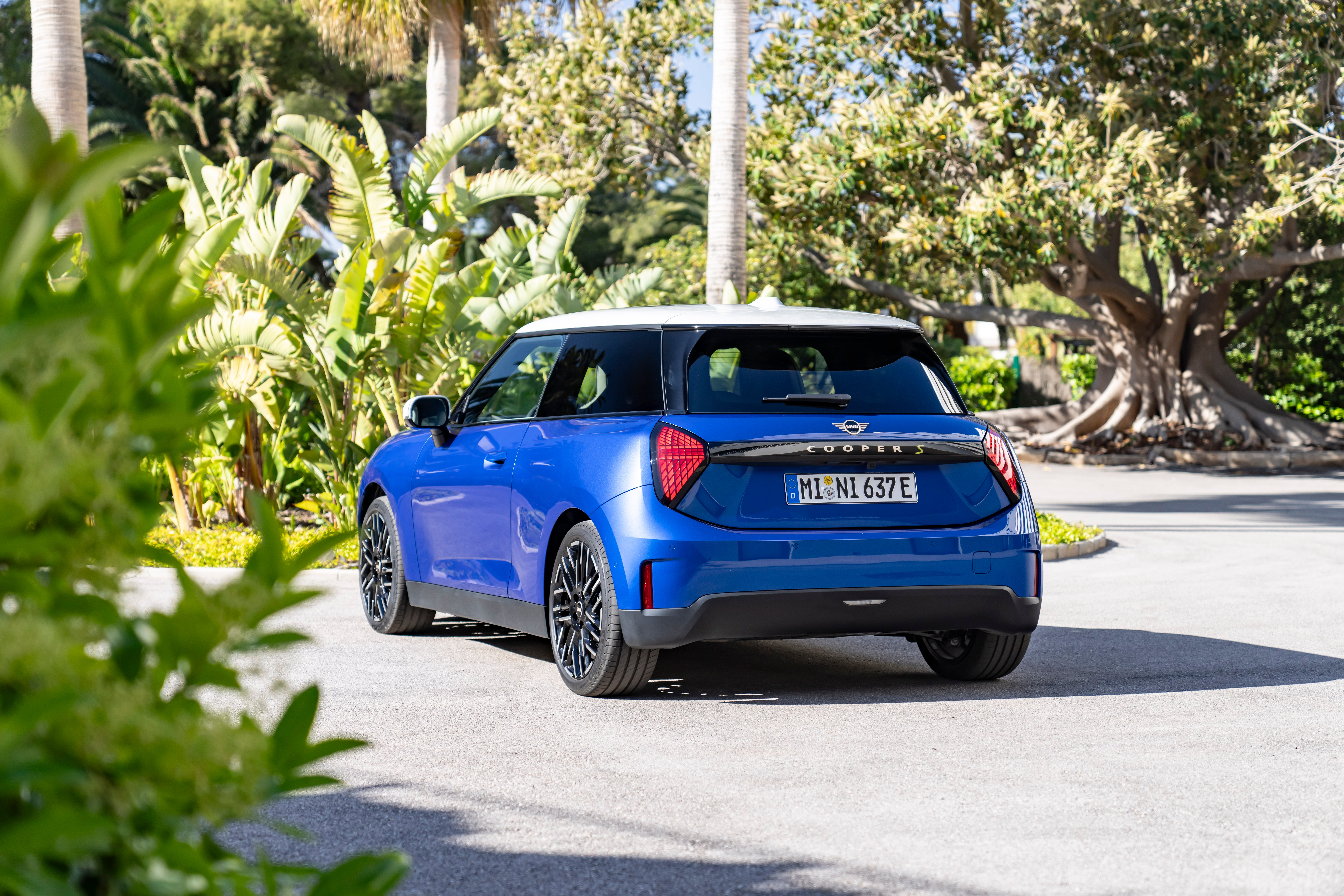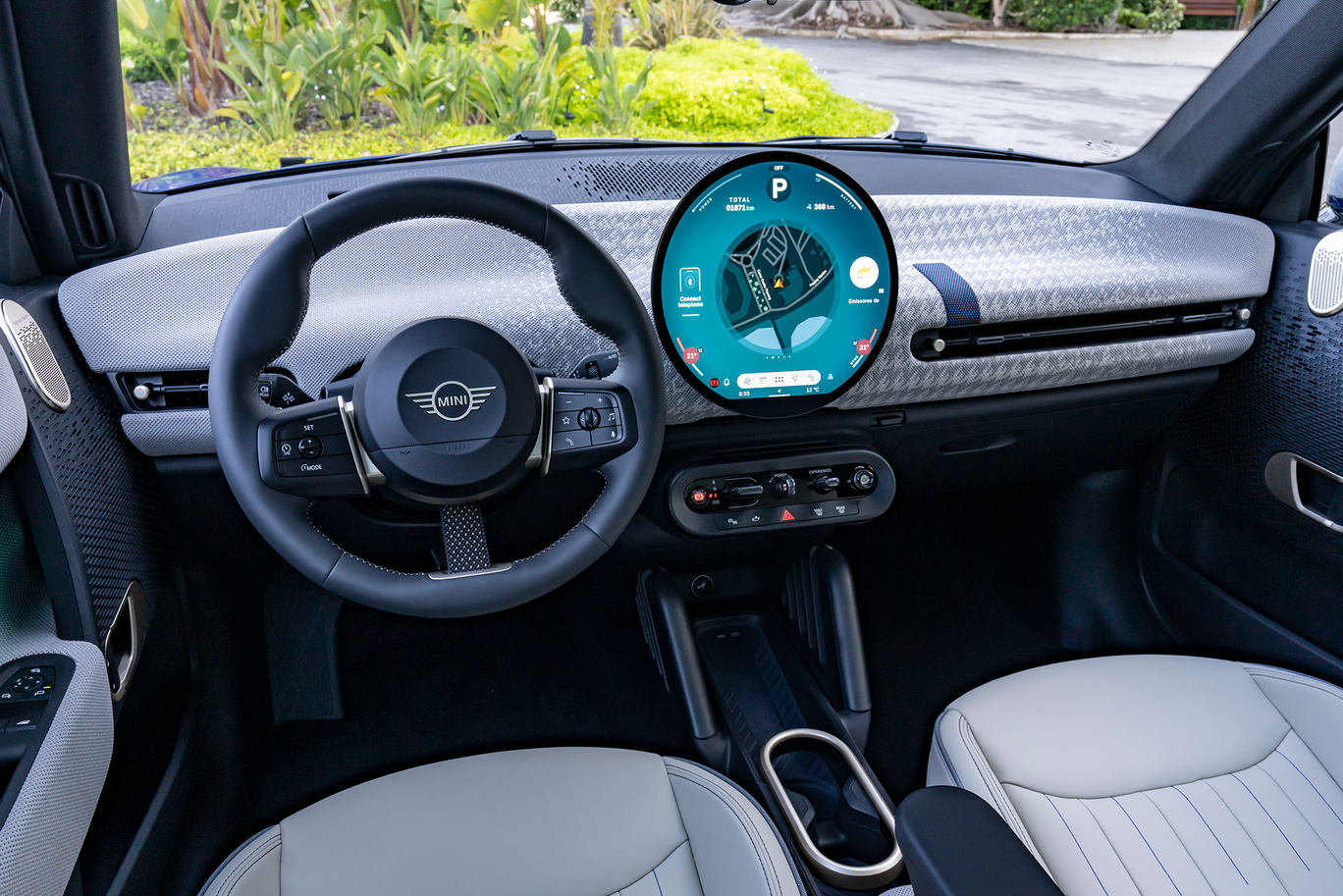
If you’re in the market for a compact electric hatchback with retro charm, then you’re in luck. Both Mini and Renault are neck-and-neck in this sector of the EV market, with their Cooper and 5 E-Tech respectively.
The latest generation of electric Mini arrived in 2024, while the new Renault 5 E-Tech went on sale at the start of 2025. Both combine retro charm and funky interiors with good range, plenty of tech and a hearty dose of fun.
Both are three-door hatchbacks with seating for four, although space in the rear is best only for children. They both have almost 200 miles of range in their basic configuration, but both also offer upgrades with larger batteries that take range close to 250 miles.
We’ve spent many miles in both cars, abroad and in the UK. Below we’ve compared the key aspects of the Mini Cooper E and Renault 5 E-Tech to help you decide which is the best small EV hatchback for you.
How we tested and compared
We have driven both cars extensively on a wide variety of roads in the UK and abroad. These drives included navigating around villages and town centres, winding country roads and motorways. As well as driving the cars and assessing their performance and ride quality, we tried out their infotainment systems and tested the practicality of their back seats and boot capacity.
Mini Cooper E vs Renault 5 E-Tech: Specs
Mini Cooper E

Independent rating: 7/10
Renault 5 E-Tech

Independent rating: 9/10
Mini Cooper E vs Renault 5 E-Tech: Price
Although they offer a similar size, specification and character, the Mini and Renault are priced quite differently. At the time of writing, in January 2025, the Mini Cooper is priced from £30,120, while the Renault 5 starts at £22,995.
Pick the bigger battery and more powerful motor, and the prices of each climb to £39,120 for the Mini and £28,995 for the Renault, plus optional extras. In fact, the fully-loaded Mini Cooper SE we drove in 2024, complete with lashings of sporty John Cooper Works kit, carried a price tag of a little over £42,000. A sportier version of the Renault 5 is also available, in the form of the Alpine A290, which starts at £33,500.
Mini Cooper E vs Renault 5 E-Tech: Range and performance
Mini says the entry-level Cooper E has a range of between 181 and 185 miles, while the Cooper SE with its larger battery (49.2 kWh vs 36.6 kWh) has a claimed range of 241 to 247 miles.
Meanwhile, the entry-level Renault 5 has a 40 kWh battery and a claimed range of up to 192 miles. Or pay extra for the larger 52 kWh battery and the range increases to 252 miles.

For both cars the larger battery also comes with a more powerful motor and quick acceleration. The entry-level Mini Cooper S has 135 kW (184 horsepower), which is a fair bit more than the 90 kW (120 hp) Renault 5. Pay a little extra, and the Cooper SE increases this to 160 kW (218 hp), and its 0-62 mph time falls from 7.3 to 6.7 seconds.
The more powerful Renault 5 has 110 kW (150 hp), with the extra power taking the 0-62 mph time down from 9.0 to 7.9 seconds.
This all means the Mini is noticeably quicker than the Renault, but then it is also more expensive and generally presents itself as the sportier of the two hatchbacks – you won’t find a go-kart mode in the Renault, for example, as the French car instead values ride comfort over sharp handling.

As for changing, the big and small batteries of the Renault 5 fill at a maximum rate of 100 kW and 80 kW respectively, which means a charge from 20 to 80 per cent takes about 30 minutes. The Mini falls a little short here, with the big and small batteries charging at 95 kW and 75 kW, but the charge time is about the same as the Renault.
Mini Cooper E vs Renault 5 E-Tech: Driving impressions
Expanding on our earlier point, the Mini is far-and-away the sportier of the two. It has stiffer suspension than the more softly-sprung Renault, and has a go-kart mode that sharpens the response of the accelerator and activates a motor sound effect that plays through the speakers. A lot of EVs have this, but few are as entertaining as the Mini’s. The sound rises and falls with speed in a similar way to a revving engine, but there’s a sci-fi edge that helps make it fun instead of being an annoying pastiche. Or, you can simply turn it off.
The Mini’s sharper handling fits the brand well, especially if you opt for the more powerful SE model, but the Cooper is perhaps a little too stiff on some road surfaces, which can feel at odds with the more muted performance of the base Cooper e.
The Renault 5 doesn’t try to entertain in the same way, but instead provides a softer, lazier and more comfortable ride. This isn’t a car to fling around corners, but is instead one that will take you long distances with a surprising amount of refinement. It isn’t especially quick – 62 mph arrives in a leisurely 8.0 seconds – but it’s spritely enough to be enjoyable in town, then is comfortable on the motorway – aside from a fair bit of wind noise created by the mirrors.
We found the brakes to be a little sharp, as they seek to send as much energy as possible back into the battery, boosting the car’s efficiency and range. It’s a trait shared by some other EVs too, but is usually something you’ll soon get used to. That said, gentle stops can take a bit of practice.
Mini Cooper E vs Renault 5 E-Tech: Interior, practicality and tech
Both of these cars have excellent interiors that offer a more premium design than you might have expected for the price. They are also packed with kit, and a hefty dose of retro charm too.

The Mini has a circular OLED touchscreen at the centre of its dashboard, which runs an operating system that takes some learning. The interface is a little cluttered, but we like the effort Mini has put into personalisation – a constant hallmark carried by the brand since it relaunched at the start of the century. Each drive mode serves up a different skin for the user interface, but key elements like battery charge, range and interior temperature controls always stay in the same place.
We like how recycled knitted fabric gives the dashboard and door panels a retro look, and how this sits alongside more modern features like light projectors and the aforementioned 9.5-inch display. There are physical toggle switches for key functions, and overall the cabin feels more roomy than you’d expect from a Mini. Rear legroom is fine for children, or adults on short journeys, and when fitted with the optional panoramic roof the interior feels light and airy. The boot is fairly small, at just 200 litres, and there’s no storage space under the bonnet.

Over to the Renault 5, and the interior is an absolute joy. It’s as if Renault has looked at Mini’s retro efforts and decided to seriously up the ante. There’s soft fabric everywhere and lots of subtle hints to the Renault 5s of old too, like how the H-shaped seats are inspired by the buckets of the original Renault 5 Turbo. The new car’s seats are wonderfully comfortable, too.
The dashboard houses a pair of 10-inch digital displays running Google’s Android Automotive operating system. This means Google Maps and Google Assistant are baked in, although you can also use Apple CarPlay (wired or wireless) if you prefer. Overall, interior quality is impressive for a car at this price point, and Renault even plans to offer a range of 3D-printed accessories, including a baguette holder which it says has proved popular among French customers.
The Renault 5 wins points for having rear doors, which the Mini Cooper lacks, but space in the second row is still at a premium, with foot space especially tight. That said, the 5 wins back some practicality points for its boot, which at 326 litres is more than 50 per cent larger than the Mini Cooper’s.
Mini Cooper E vs Renault 5 E-Tech: Verdict
There isn’t much to separate these two electric hatchbacks in terms of design, performance, technology and practicality – but then there’s the price.When comparing base models, the Renault is £7,000 cheaper than the Mini – and even when opting for the flagship Iconic Five trim level, plus the bigger battery and more powerful motor, the Renault lands at £28,995. That still makes it cheaper than the entry-level Mini Cooper E, which starts at £30,120.
Add this to the Renault’s charming design, high-quality interior with smart retro details, 250-mile range and integrated Google tech, and it’s our winner.







